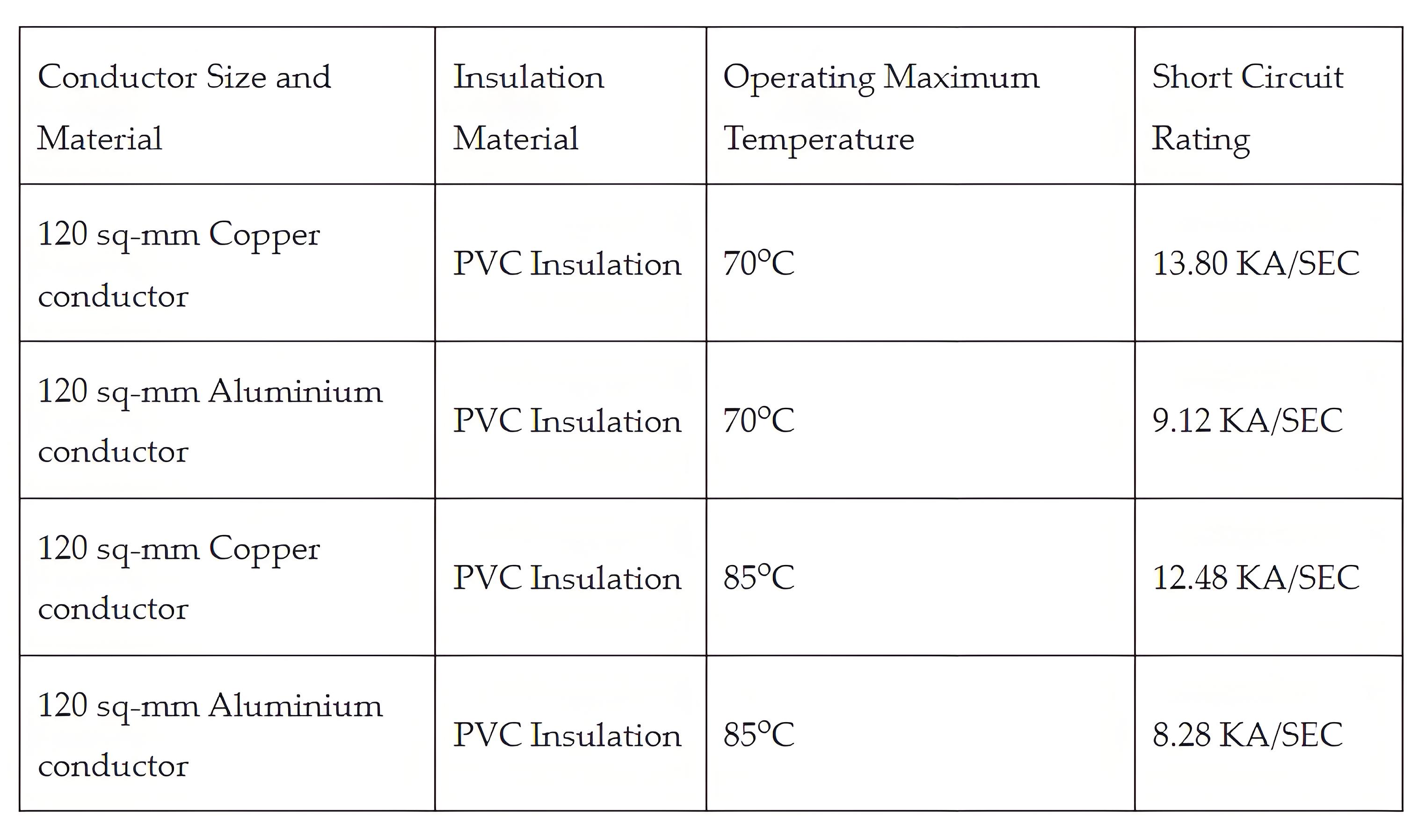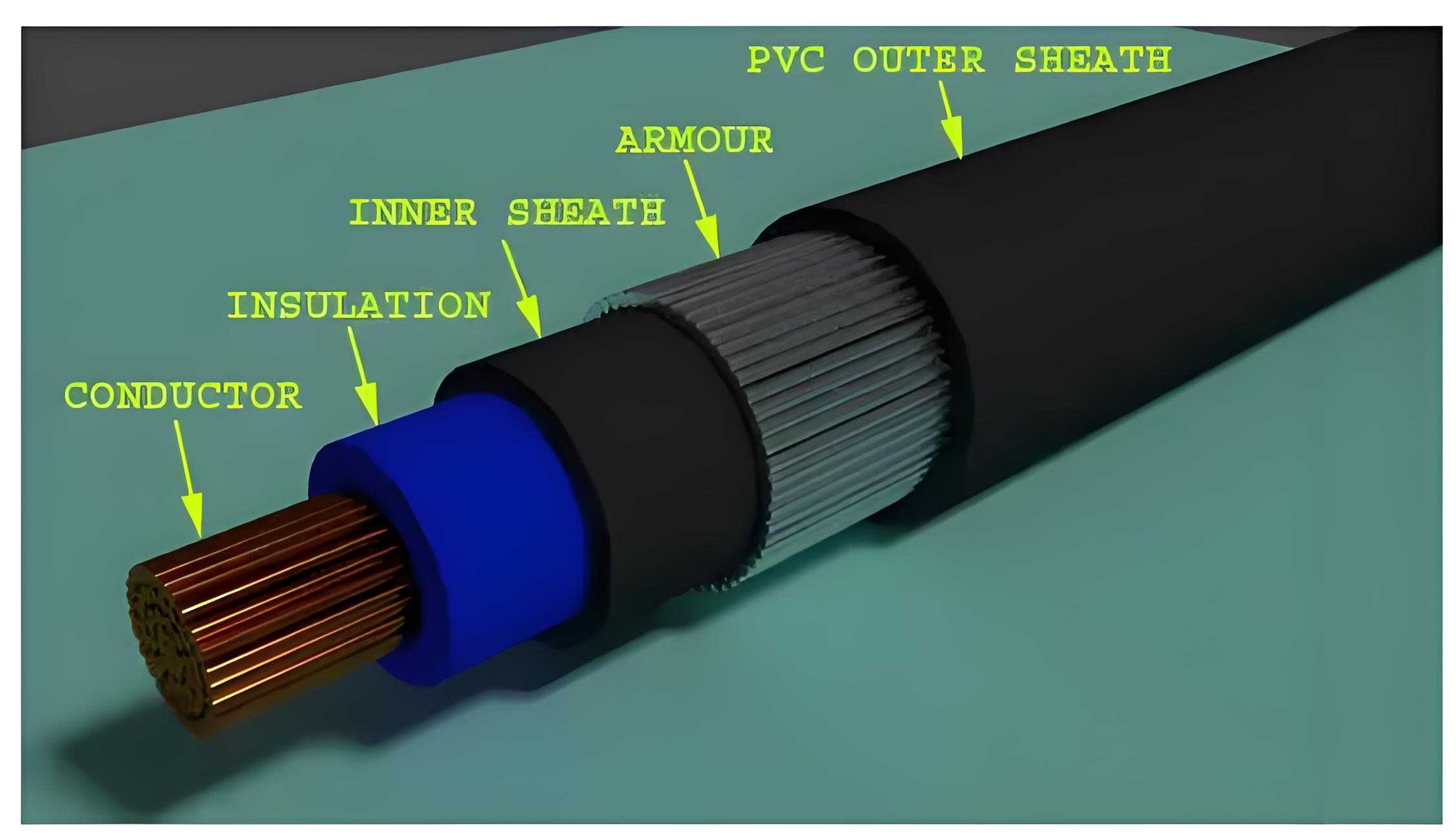What are the Types of Electrical Power Cables ?
What are the Types of Electrical Power Cables ?
Power Cable Definition
A power cable is defined as an assembly of insulated electrical conductors used for transmitting and distributing electrical power.
Types of Cables in Power System
Power cables can be overhead or underground, designed for specific applications and requirements.
Short Circuit Rating
It happens frequently that the conductor size necessary for installation is dictated by its ability to carry short-circuit current rather than sustained current. During a short-circuit, there is a sudden inrush of current for a few cycles followed by a steadier flow of current for a short period until the protection switchgear operators, normally between 0.1 – 0.3 seconds.

Current Carrying Capacity
Current carrying capacity is crucial for choosing the right conductor size. Voltage drop and short-circuit rating also matter for economical and optimal sizing. The safe current capacity of an underground cable is based on its maximum allowable temperature rise, caused by heat losses.

Voltage Drop
The allowable maximum voltage drops from source to load is another aspect of power cable conductor design.
As per Ohm’s law, V = IR. The first is the choice of material used for the wire. Copper is a better conductor than The first is the choice of material used for the wire. Copper is a better conductor than and will have less voltage drop than aluminum for a given length and wire size.
Wire size is another important factor in determining voltage drop. Larger wire sizes (those with a greater diameter) will have less voltage drop than smaller wire sizes of the same length. In American wire gauge, every 6 gauge decrease gives a doubling of the wire diameter, and every 3 gauge decrease doubles the wire cross-sectional area. In the Metric Gauge scale, the gauge is 10 times the diameter in millimeters, so a 50 gauge metric wire would be 5 mm in diameter.
Construction of Power Cable
There are various parts of a cable to be taken care of during construction. The power cable mainly consists of
Conductor
Insulation
LAY for Multicore cables only
Bedding
Beading/Armouring (if required)
Outer Sheath

Conductor
Conductors are the only power carrying path in a power cable. Conductors are of different materials. Mainly in the cable industry, we use copper (ATC, ABC) and aluminum conductors for power cables. There are different types of a conductor as Class 1: solid, Class 2 stranded, Class 5 flexible, Class 6 Extra flexible (Mostly used for cords and welding), etc. Conductor sizes are identified with conductor resistance.
Insulation
The insulation provided on each conductor of a cable by mainly PVC (Poly Vinyl Chloride), XLPE (Crosslinked Polyethylene), RUBBER (Various Types of Rubber). The insulating material is based on operating temperature.
Cha4
Cores are identified by color-coding by using different colors on insulation or by number printing on cores
Beading (Inner Sheath)
This portion of the cable is also known as the inner sheath. Mostly it is used in Multi-core cables. It works as a binder for insulated conductors together in multi-core power cables and provides bedding to armor/braid. This portion of the cable is mainly made of PVC( PVC ST-1, PVC ST-2 ), RUBBER (CSP SE-3, CSP SE-4, and PCP SE-3, PCP SE-4, HOFR SE-3 HOFR SE-4, HD HOFR SE-3 ETC).
Armoring
There are mainly G.I. WIRE ARMOURING, G.I. STEEL STRIP armoring. It is done by placing G.I. WIREs, GI, or STEEL STRIPs one by one on inner sheath. Armoring is a process that is done mainly for providing an earthing shield to the current-carrying conductors as well as it is also used for earthing purposes of the cable for safety.
When there is any insulation failure in the conductor, the fault current gets enough paths to flow through the armor if it is properly earthed. Providing extra mechanical protection and strength to cable is an important added advantage of armoring. In mining cables this is done for conductance.
Beading
ANNEALED TINNED COPPER WIRE, NYLON BRAID, COTTON BRAID are mainly used for this purpose. Braiding is the process which gives high mechanical protection to cable and also used for earthing purpose. The significance of braiding is it is more flexible in comparison to armoring.
Outer Sheath
This is the outermost cover of the cable normally made of PVC (Poly Vinyl Chloride), RUBBER (Various Types of Rubber), and often the same material as the bedding. It is provided over the armor for overall mechanical, weather, chemical, and electrical protection. The outer sheath is the protection offered to the cable not much electrically but more mechanically.
Mainly above 6 square mm cables are called power cables but it depends upon the use of a cable. For PVC power cables we use IS:1554 and for XLPE power cables we use IS:7098 and for Rubber-based power cables, we use IS:9968 and other relevant specifications. Power cables are defined by voltage grade and nominal cross-sectional area.
The Electricity Encyclopedia is dedicated to accelerating the dissemination and application of electricity knowledge and adding impetus to the development and innovation of the electricity industry.













